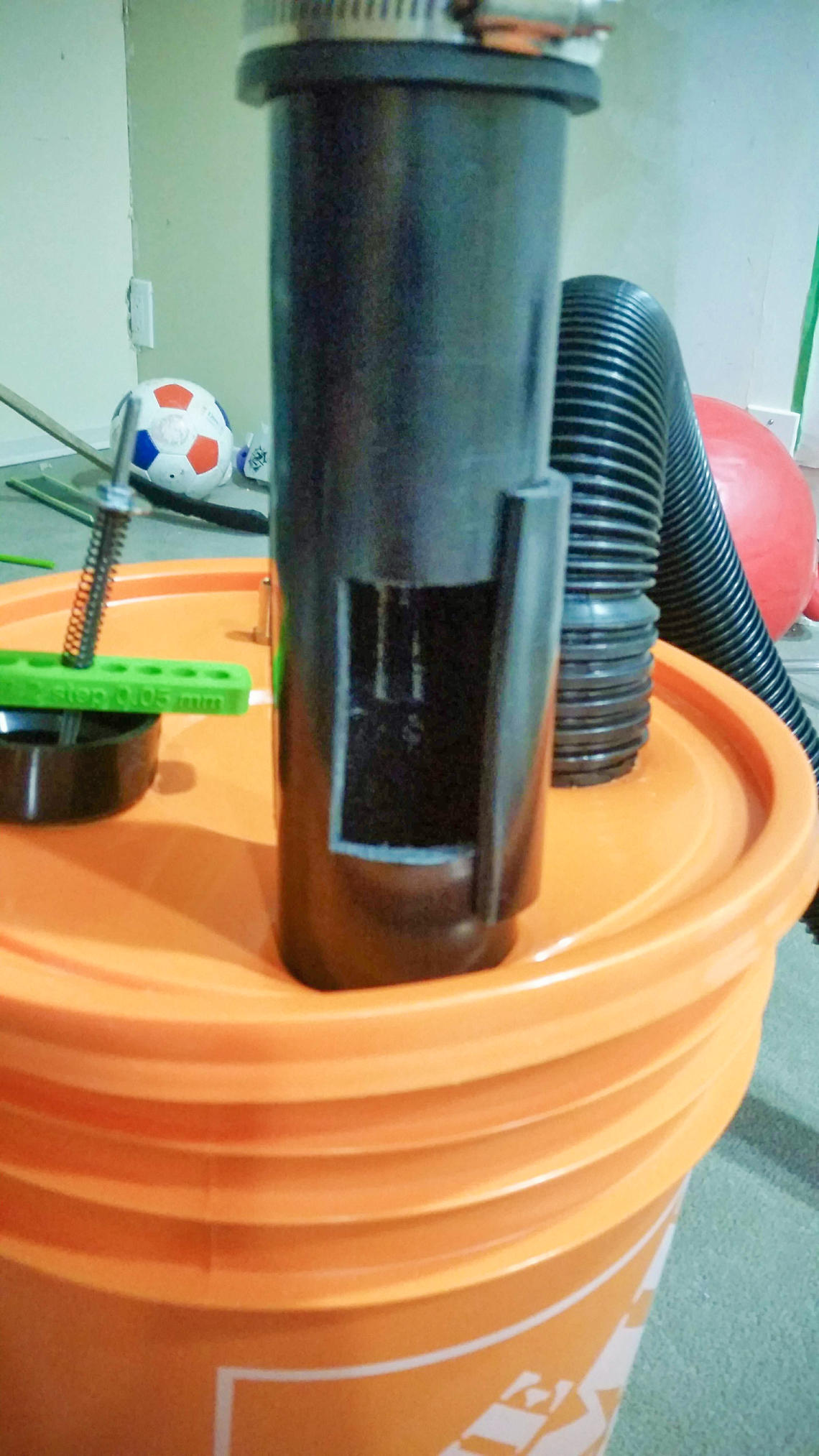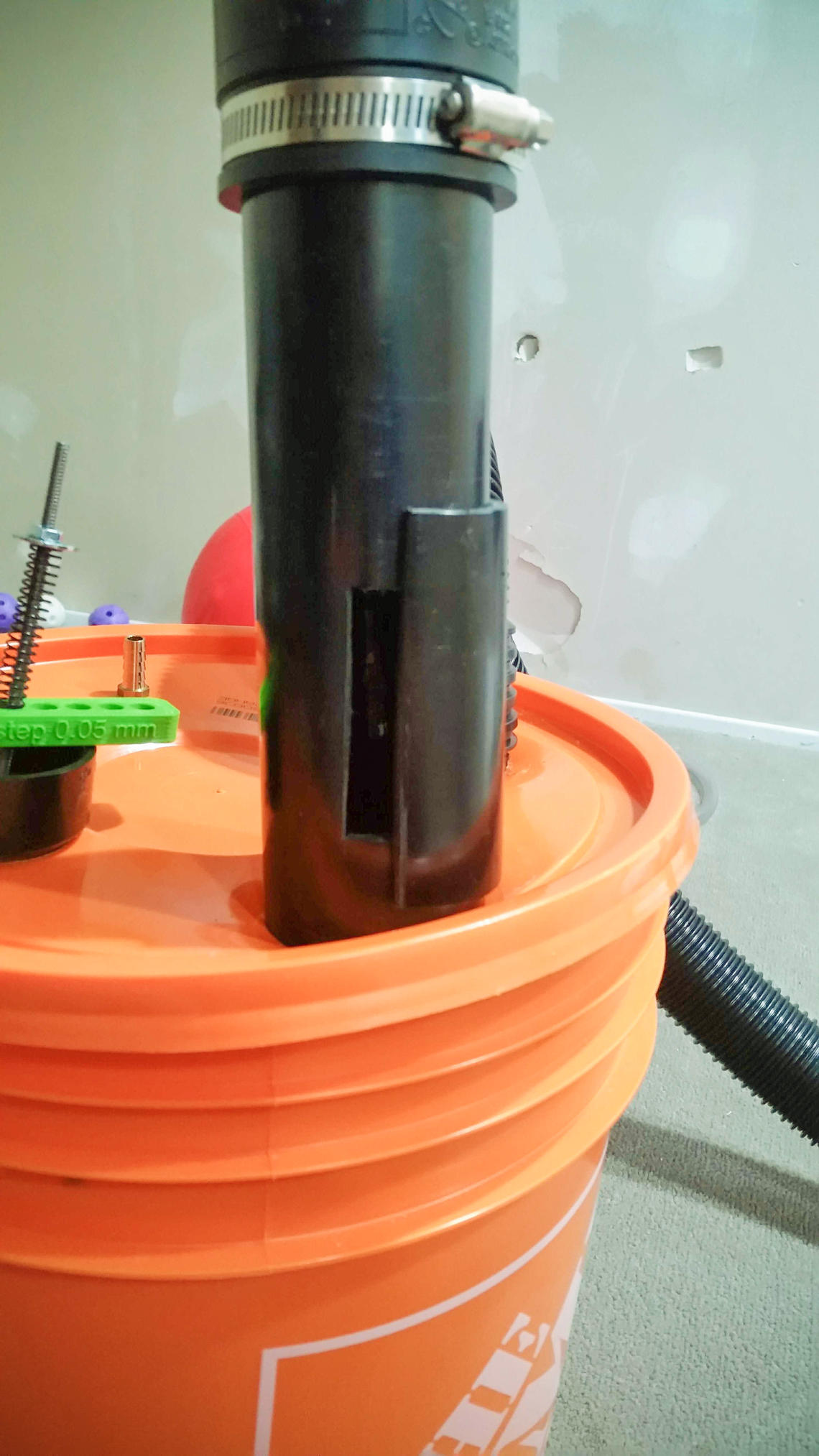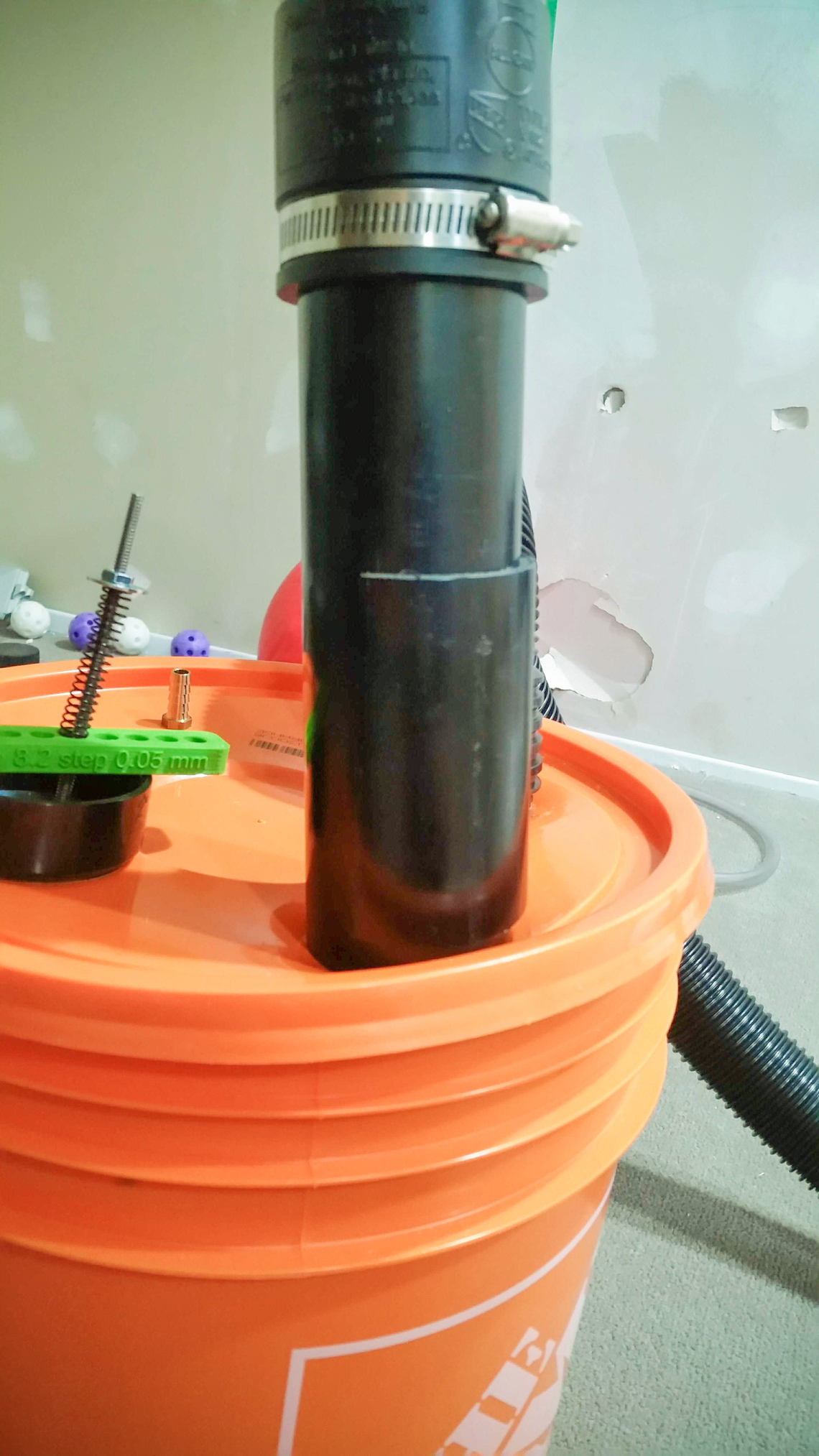Vacuum Source
Initial conversations with respirologists indicate that the negative chamber pressures required are down to -50 cm H2O or around 5 kPa, as indicated in the literature7. These pressures can be obtained by household vacuum cleaners; however, the equipment must tolerate continuous operation. Other options could include individual blowers, air movers and centralized dust-collection type systems for multiple patients or even manual approaches such as bellows. To select the vacuum source, consideration must be given to durability, reliability, simplicity and failure modes (for example, can it be hand-pumped during a power failure?).
In the absence of computer-controlled motors that can quickly reverse air direction, producing a constant negative pressure with widely available components requires connecting and disconnecting the chamber. Local HVAC suppliers will likely have suitable equipment in stock and the expertise to assemble this rapidly.
To adjust pressure, a bleed valve could be used as shown in Fig. 6.
A simple weighted flap opens in response to pressure differential to provide adjustable feedback control and stabilize sink negative pressure. One medical professional suggested that in some cases a positive pressure of up to +10 cm H2O may be useful during the exhale phase. This could potentially be obtained from the output port of the air handling system; however, it would require a more rigid and complex chamber (e.g. Both cabinet). Unless a widespread need is anticipated, it is likely preferable to reserve more advanced equipment for these patients, rather than adding it here.
Alternatively, an online report from an ICU anaesthesiologist indicated COVID-19 patients may retain good lung compliance, but exhibit profound deoxygenation.8 It may therefore be desirable to maintain residual external negative pressure at the end of the cycle, analogous to PEEP (Positive End Expiratory Pressure), sometimes referred to as external PEEP.9 This could be achieved via a relief valve (Fig. 6) limiting atmospheric air intake during the exhale phase. As the patient’s face remains free, supplemental oxygen could be delivered via nasal cannula, low- or high-flow masks (including masks with exhalation filters capable of capturing exhaled viral particles), or more invasive intubation strategies.

Fig. 6: A flap with an adjustable weight (shown here as a bolt with a variable number of washers) will remain closed (upper) while the force due to the pressure differential (white arrow) is less than the force of gravity (black arrow), and will open (lower) if the pressure exceeds the set point. A spring with adjustable preload could also be substituted here.
An example of a manual bleed valve made from PVC pipe with a hole and a partial section of the same pipe covering it to varying degrees is shown in Fig 7.

Open manual bleed valve

Partially closed manual bleed valve

Fully closed manual bleed valve
